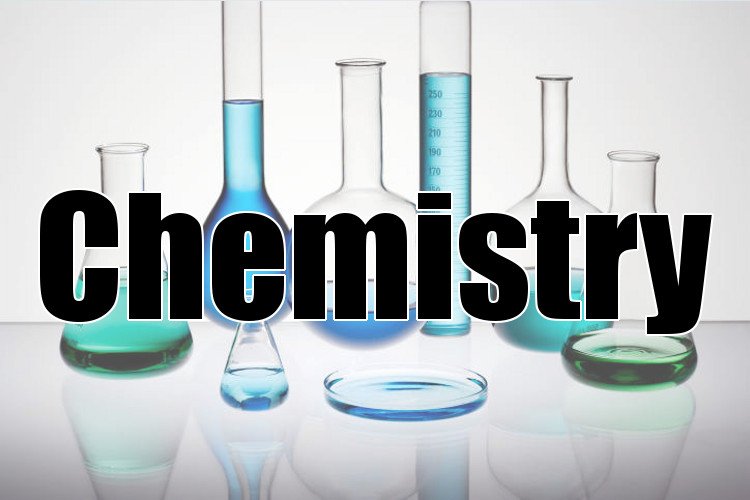This detailed breakdown of the SSS 1 Chemistry Scheme of Work for the second term focuses on key chemistry concepts that will build a solid foundation for students. Each topic is explained in simple terms, with practical examples to ensure clarity, helping novice learners understand these fundamental ideas in chemistry.
SSS 1 Scheme of Work for Chemistry – Second Term
| Week | Topic | Content |
|---|---|---|
| Week 1 | Introduction to Mole Concept | Introduction to the mole concept, Avogadro’s number, and molar mass. |
| Week 2 | Introduction to Mole Concept (Cont’d) | Continued exploration of mole calculations, the relationship between moles, mass, and volume. |
| Week 3 | Chemical Equations | Overview of chemical equations, balancing equations, and types of chemical reactions. |
| Week 4 & 5 | Laws of Chemical Combination | Study of the laws governing chemical reactions such as the law of conservation of mass and the law of definite proportions. |
| Week 6 | Chemical Combinations and Bonding | Explanation of chemical bonds (ionic, covalent, and metallic) and how elements combine to form compounds. |
| Week 7 | The Kinetic Theory of Matter | Introduction to the kinetic theory, explaining how particles behave in solids, liquids, and gases. |
| Week 8 | Gas Laws | Overview of basic gas laws such as Boyle’s Law, Charles’ Law, and Gay-Lussac’s Law. |
| Week 9 | Gas Laws II | Further study on gas laws, including the ideal gas law and real gas behavior. |
| Week 10 | Air | Detailed study of the composition of air, properties of air, and the importance of air in chemical reactions. |
| Week 11 | Revision | Comprehensive review of all topics covered during the term to solidify learning. |
| Week 12 | Examination | Final assessment of all topics studied during the second term. |
Week 1: Introduction to Mole Concept
Explanation:
The mole concept is one of the fundamental concepts in chemistry. It allows chemists to count and quantify atoms, molecules, or ions. A mole is defined as the amount of substance that contains exactly 6.022×10236.022 \times 10^{23} particles, known as Avogadro’s number. The molar mass is the mass of one mole of a substance, usually expressed in grams per mole (g/mol).
Examples:
- One mole of carbon (C) contains 6.022×10236.022 \times 10^{23} carbon atoms.
- The molar mass of water (H₂O) is approximately 18 g/mol, meaning one mole of water weighs 18 grams.
- When 1 mole of hydrogen reacts with 1 mole of oxygen, it forms 1 mole of water.
- 1 mole of methane (CH₄) contains 6.022×10236.022 \times 10^{23} molecules of methane.
- One mole of sodium chloride (NaCl) contains 6.022×10236.022 \times 10^{23} NaCl formula units.
- The concept of moles allows us to convert between mass, volume, and number of particles in chemical reactions.
Week 2: Introduction to Mole Concept (Continued)
Explanation:
In this second week, we continue to explore the mole concept with a focus on mole calculations. We examine the relationship between moles, mass, and volume, as well as how to convert between moles and these other units.
Examples:
- To calculate the number of moles from mass:
Number of Moles=Mass of SubstanceMolar Mass\text{Number of Moles} = \frac{\text{Mass of Substance}}{\text{Molar Mass}} - The number of moles in 36 grams of water can be calculated as:
Number of Moles=36 g18 g/mol=2 moles\text{Number of Moles} = \frac{36 \, \text{g}}{18 \, \text{g/mol}} = 2 \, \text{moles} - To find the mass of 2 moles of sodium chloride (NaCl):
Mass=2 moles×58.5 g/mol=117 g\text{Mass} = 2 \, \text{moles} \times 58.5 \, \text{g/mol} = 117 \, \text{g} - The volume of 1 mole of gas at STP (standard temperature and pressure) is 22.4 liters.
- Moles can also be used to find the number of molecules:
Number of Molecules=1 mole×6.022×1023 molecules\text{Number of Molecules} = 1 \, \text{mole} \times 6.022 \times 10^{23} \, \text{molecules} - To find the number of moles of a gas in a given volume, use the ideal gas law:
PV=nRTPV = nRT
Week 3: Chemical Equations
Explanation:
Chemical equations represent the substances involved in a chemical reaction. The reactants are written on the left side, and the products are on the right. Balancing chemical equations ensures that the law of conservation of mass is followed, meaning that matter is neither created nor destroyed in a chemical reaction.
Examples:
- The combustion of methane:
CH4+2O2→CO2+2H2O\text{CH}_4 + 2 \text{O}_2 \rightarrow \text{CO}_2 + 2 \text{H}_2\text{O} - The reaction between sodium and chlorine to form sodium chloride:
2Na+Cl2→2NaCl2 \text{Na} + \text{Cl}_2 \rightarrow 2 \text{NaCl} - Balancing the reaction of hydrogen with oxygen to form water:
2H2+O2→2H2O2 \text{H}_2 + \text{O}_2 \rightarrow 2 \text{H}_2\text{O} - The reaction of zinc with hydrochloric acid to form zinc chloride and hydrogen gas:
Zn+2HCl→ZnCl2+H2\text{Zn} + 2 \text{HCl} \rightarrow \text{ZnCl}_2 + \text{H}_2 - The decomposition of calcium carbonate:
CaCO3→CaO+CO2\text{CaCO}_3 \rightarrow \text{CaO} + \text{CO}_2 - The synthesis of ammonia from nitrogen and hydrogen (Haber process):
N2+3H2→2NH3\text{N}_2 + 3 \text{H}_2 \rightarrow 2 \text{NH}_3
Week 4 & 5: Laws of Chemical Combination
Explanation:
The laws of chemical combination are essential principles in understanding how elements react to form compounds. These include the Law of Conservation of Mass, the Law of Definite Proportions, and the Law of Multiple Proportions.
Examples:
- Law of Conservation of Mass: In a chemical reaction, the total mass of the reactants equals the total mass of the products.
Mass of Reactants=Mass of Products\text{Mass of Reactants} = \text{Mass of Products} - Law of Definite Proportions: A compound always contains the same elements in the same proportions by mass. For example, water (H₂O) always contains 2 grams of hydrogen for every 16 grams of oxygen.
- Law of Multiple Proportions: When two elements combine to form more than one compound, the masses of one element that combine with a fixed mass of the other element are in simple whole-number ratios. For example, carbon and oxygen can combine to form both carbon monoxide (CO) and carbon dioxide (CO₂), where the mass ratio of oxygen in the two compounds is a simple whole number (1:2).
Week 6: Chemical Combinations and Bonding
Explanation:
Chemical bonding is the force that holds atoms together in compounds. There are three main types of chemical bonds: ionic bonds, covalent bonds, and metallic bonds. Understanding how atoms combine to form molecules is fundamental to chemistry.
Examples:
- Ionic Bond: Sodium chloride (NaCl) is formed by the transfer of an electron from sodium (Na) to chlorine (Cl), creating oppositely charged ions that attract each other.
- Covalent Bond: In water (H₂O), the oxygen atom shares electrons with two hydrogen atoms, forming covalent bonds.
- Metallic Bond: In metals like copper (Cu), electrons are shared freely between atoms, allowing metals to conduct electricity.
- Ionic Bond in Calcium Fluoride (CaF₂): Calcium loses two electrons to form a Ca²⁺ ion, and each fluorine atom gains one electron to form F⁻ ions.
- Covalent Bond in Methane (CH₄): Carbon shares four electrons with four hydrogen atoms, forming four covalent bonds.
- Polar Covalent Bond: In hydrogen chloride (HCl), the shared electrons are closer to the chlorine atom due to its higher electronegativity, creating a dipole.
Week 7: The Kinetic Theory of Matter
Explanation:
The kinetic theory of matter explains the behavior of particles in different states of matter. According to this theory, particles are always in motion, and their motion determines the properties of solids, liquids, and gases.
Examples:
- In solids, particles vibrate in fixed positions but do not move freely.
- In liquids, particles are free to move but are still attracted to each other.
- In gases, particles move freely and spread out to fill any container.
- As temperature increases, the kinetic energy of particles increases, causing them to move faster.
- The pressure of a gas increases when the temperature increases, as particles collide more frequently with the container walls.
- The volume of a gas decreases when the temperature decreases, as the particles slow down and take up less space.
Week 8 & 9: Gas Laws
Explanation:
Gas laws describe how gases behave in terms of pressure, volume, and temperature. Key gas laws include Boyle’s Law, Charles’s Law, and Gay-Lussac’s Law.
Examples:
- Boyle’s Law: The pressure of a gas is inversely proportional to its volume at constant temperature.
P1V1=P2V2P_1 V_1 = P_2 V_2 - Charles’s Law: The volume of a gas is directly proportional to its temperature at constant pressure.
V1T1=V2T2\frac{V_1}{T_1} = \frac{V_2}{T_2} - Gay-Lussac’s Law: The pressure of a gas is directly proportional to its temperature at constant volume.
P1T1=P2T2\frac{P_1}{T_1} = \frac{P_2}{T_2} - Ideal Gas Law: Combines Boyle’s, Charles’s, and Avogadro’s laws into one equation:
PV=nRTPV = nRT - Avogadro’s Law: Equal volumes of gases at the same temperature and pressure contain the same number of molecules.
- Real gas behavior deviates from ideal gas laws at high pressures and low temperatures.
Week 10: Air
Explanation:
Air is a mixture of gases, primarily nitrogen (78%), oxygen (21%), and other gases (1%). Understanding its composition and behavior is crucial in many chemical reactions, particularly combustion.
Examples:
- Air is necessary for combustion, as it provides oxygen to fuel.
- Plants use carbon dioxide in air for photosynthesis.
- Air pressure is the force exerted by the weight of air molecules on objects.
- Air expands when heated and contracts when cooled.
- Nitrogen is largely inert and does not readily react with other elements.
- The presence of oxygen in air makes it essential for life and many chemical reactions.
Week 11: Revision
Explanation:
This week is dedicated to revisiting all the topics studied during the term. Students review key concepts, solve practice questions, and discuss any areas that need clarification.
Week 12: Examination
Explanation:
The final week includes an examination, where students will be tested on all the concepts covered during the term. It’s essential that they thoroughly prepare and understand each topic.

